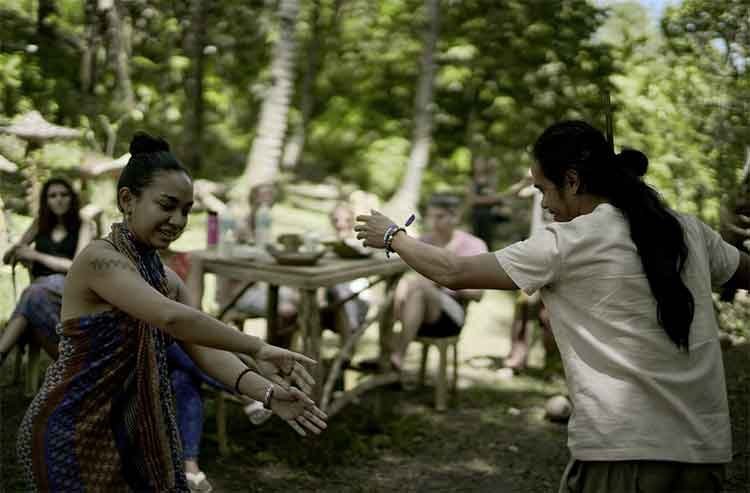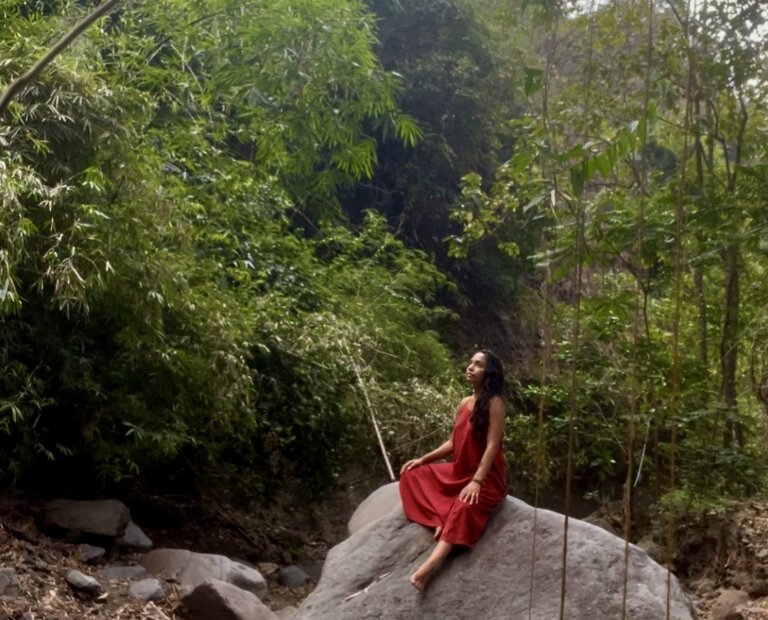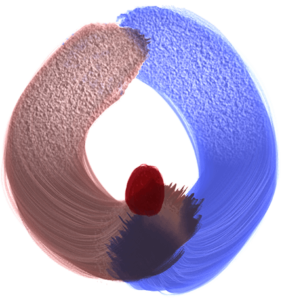A short story on the urban indiogenius within us all
Urban Indiogenius
A few years ago, I was at Luna Musikalawaig, an indigenous music festival in Southern Philippines. It was independently run and located on a beautiful regenerative permaculture farm, Ki Bathala Gardens. It was mainly by invitation or within close networks, to keep the crowd intimate and filled with resonant and like minded community. Still, people from around the world arrived.
Ki Bathala Gardens was regenerated by a passionate family for over 20 years. It brought back a running river that was once dry. It grows hundreds of native herbs, fruits, and vegetables. It is raw, thriving, and abundant; as nature is meant to be. The main performers were mostly native and locals, with the Talaandig Tribe as the featured performers. Being at this festival with the vibrant mystical landscapes and sacred rivers and trees, along with the small international and indigenous community, brought me deep vitality that continues to ring in my body, years later.
Upon returning to Singapore, I still had a craving to dance, so I made my way to the then Kilo Lounge. Although we were in a totally different context, and the music was electronic rather than acoustic; there was the same sense of the jungle in Philippines that was present here in Singapore.
The DJ felt like the neo-shaman of the night, carrying crowd into an inner journey. People would make primal and animal like sounds. Some people slightly intoxicated, so in moments you feel territorial, like you would with some animals! It truly felt like I was back at that regenerative farm in wild nature. I never thought I could feel the same in a city, especially one like Singapore; with its suppression of wild nature and primming of gardens. Yet, there are always pockets where one can find our true essence — emancipated, liberated, and free; despite restrictions, difficulties, and crisis. Even if it’s just for a moment in movement and music, that moment goes beyond time.
Time travelling into the first peoples of the earth, our origins are indigenous, and those linked directly to indigenous ancestral lineages should be protected and respected. Kidlat Tahimik, National Artist and Father of Philippine Independent Cinema, whose works critique the division of globalisation, capitalism, and tradition; coined the term “indiogenius“, of people who identify with indigenous values, but are not from a direct indigenous ancestral lineage.
In my own personal practice, I am grateful to have encountered and danced with a variety of communities from the Ifugao (Philippines), Talaandig (Philippines), Mangyan (Philippines), Wolof (West Africa) and Shipibo (Peruvian) and more; that continue to impact and inspire my work each day. Thank you for sharing your wisdom with the world, it is necessary for the community centric caretaking of ourselves and the earth.
These experiences enliven and illuminate my drive to create such spaces of deep connection to self and to community in Singapore; as reflected in the curation of the programmes at Altered States and therapy offerings at Body as Earth.
A peak at Luna Musikalawaig and Ki Bathala Gardens in these photos below.

Photos by Inshallah Montero
Origins of Ecstatic States
Near by the most active volcano in the world, Pelé and along side the cliff side wild waves of the Pacific Ocean, is the town of Kalani-Honua Hawaii. In this wild, hot, and ecstatic landscape; the unification of live acoustic music and electronic music birthed the movement of Ecstatic Dance. This spread globally, notorious for its pure (sober) experiences of altered states through the power of movement, music, community, and space holding.
The originators of this movement kept Ecstatic Dance free from trademarks and official franchising or training. Instead, they kept the movement Open Source — where anyone could dance in a safe and sacred space with guidelines for a container. This is appropriate, as ancient practices are not ours to claim ownership or patenting over. In Singapore, we gladly continue the movement to create a pocket in our busy city, where we can come into a peaceful yet ecstatic state through movement and music to embody liberation.
Beyond the recently termed movement Ecstatic Dance (2000C). Ecstasy is termed as a ‘experience of total involvement with awareness’. In history, sacred dancers pursued ecstatic states in the spirit of rapture. Shamanism and indigenous native culture always centre around dance and music. Ethnologist Maria-Gabriela Wosien identified degrees of ecstasy as a way to access “the whisper, the prophecy, the gift, highest grade of inspiration”.
Ecstatic dancing includes a feeling of connection with others, a universal relatedness with ones own emotions, and importantly a restoration of serendipity — a way to cope with stress, in modern terms. This movement is not recent. It is part of our original nature.
Three Simple Boundaries
Boundaries allows for safety. We follow these guidelines to create a space where people and tune in deeper into the body, rather than get distracted by the mind.
Dancing barefoot: to connect more with the earth/ground. Not required, yet encouraged.
Dance without words: this makes it easier to come into a meditative state, no talking amidst the journey, unless one is in the lounge or outside the dance floor.
Dance as you are: no phones, no judgements or expectations, no alcohol or drugs. Be as you are and respect each other.
Ecstatic Dance in Singapore
Join us for Ecstatic Dance every third Thursday of the month to round the year up (Oct – Dec 2022) at the beautiful studio of clay and wood nested in Kallang Riverside, Altered States — kicking off this October 20th! We’ll only offer 18 spaces to keep it spacious and comfortable. All is welcome.
Share this with a friend who you think may need such a space to release tension in the body and come home to your true essence, bliss full and ecstatic!











